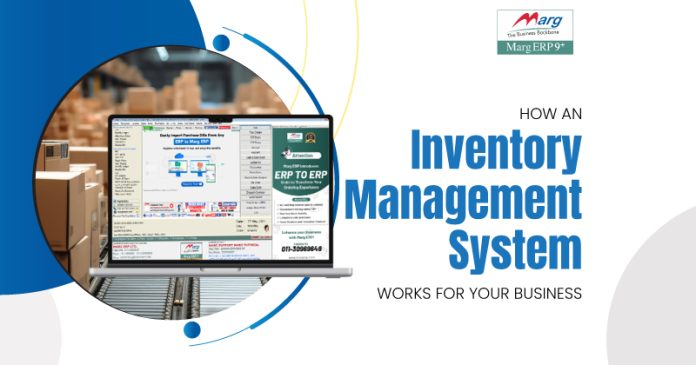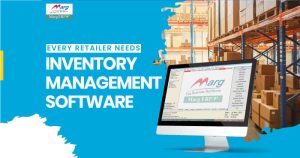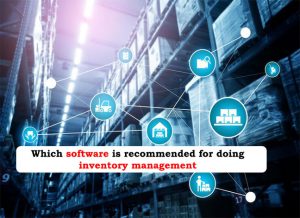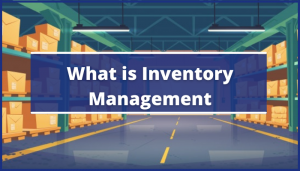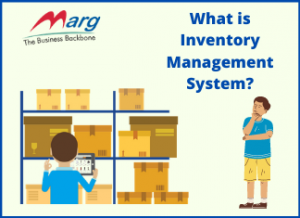What is an Inventory Management System?
An inventory management system is an inventory tool or software solution used to track the inventory levels, orders, sales, and deliveries of a business. IMS is incredibly useful in streamlining how the several processes that go into tracking inventory-from raw materials all the way to finished goods be monitored effectively.
Using real-time data and automation, IMS ensures businesses can handle their inventory efficaciously and eliminate the possibility of human error opportunities that can lead to significant operational inefficiencies.
For retail, manufacturing, and e-commerce sectors, IMS is applied to monitor all inventories spread across multi-locations, manage suppliers, and develop predictions for the demand.
Key Characteristics of an Inventory Management System
An inventory management system for your business would comprise the following discussed below:
- Stock Monitoring: In real time, this tracks the level and can give visibility on which product has run low or is overstocked.
- Automatic Reordering: This is ordering fresh stock when the level falls below a particular threshold.
- Inventory Forecasting: Aims at estimating demand in the future from historical data, trends, and seasonal changes.
- Multi-location Management: Controlling inventory from multiple warehouses, stores, or geographic locations.
- Supplier Management: Maintains list of suppliers with relevant purchase orders for easy ordering and follows up on the performance of the suppliers.
- Barcode Scanning and RFID Support: Error stock management using technology.
- Integration with Other Systems Accounting, CRM, and Point-of-sale systems can now be integrated to treat as a whole business process.
Types of Inventory Management Systems
Inventory management systems may be adopted in different forms depending on the size and need of a business. These include:
- Manual Systems: These are conventional forms that use spreadsheets or paper-based logs to track the stock levels. Although inexpensive, the manual systems are prone to errors and lack efficiency.
- Automated System: These systems employ software to automatically update levels in the stock of an item sold or returned. Such systems give the advantage of providing real-time analysis and minimizing errors associated with human involvement.
- Barcode and RFID Systems: Barcode and RFID have automated systems that would require the use of barcodes and further alternatives with RFID technology. For this purpose, employees use a barcode scanner and RFID readers to update the records of inventory.
- Cloud-Based Systems: Computer-based inventory control package wherein the whole system is accessed over the Internet and provides instant access to any information that one may want to know at any time-an ideal format for multiple locations.
How Inventory Management Systems Work
An inventory management system works by streamlining the process of tracking the inventory level, starting when an order is made and finally when the product is sold. The steps are explained as shown below:
- Data Input: All products will be put into the system with their information such as SKU number, description, quantity, and suppliers. Data Input may either be input manually in the first instance or through importing data from an Excel spreadsheet or other software.
- Inventory Upgrades: Whenever any sale takes place and inventory is replenished, the system automatically adjusts the levels of these products. Such processes are made fast and error-free due to the use of barcoding or RFID.
- Stock Reorder: When the stock levels hit a designated cut off point, automatically, the system ordered stock to be maintained at desired stock levels. This would prevent stock-outs of popular merchandise.
- Real-time Reporting: The Stock position, sales, and order fulfilments will be reported in the inventory management system. That way, it will be possible to make effective decisions over both production and distribution in due time.
- Integration: This system can, therefore, be integrated with account software and other e-commerce platforms or ERP systems. Having all the operations integrated into one, the whole business runs pretty well.
Advantages of Using an Inventory Management System
The use of an inventory management system has several advantages to your business, such as:
- Cost Saving: The right IMS prevents you from overstocking, which ties up capital, and understocking, which may lead to lost sales. Businesses thus cut on warehousing costs and ensure maximum working capital through the ideal level of stock.
- Increased Accuracy: Human errors cause misaligned data about actual stock and the data recorded in the system when inventories are tracked manually. An automated system of inventory management promotes accuracy, thus minimizing chances of having human errors.
- Time Saving: An inventory management system automates many time-consuming tasks such as updating stock and order management. This will allow your team to focus more on higher business activities rather than just administrative kinds of work.
- Enhanced Customer Satisfaction: Businesses can fill orders in a much shorter time to the customer, so fulfilling customers better, as they can have high levels of accurate inventory. This is very critical for businesses that are conducted through retail and e-commerce because fast order fulfilment is one thing that your brand might need to make the difference.
- Data-Driven Decision Making: This enables a management system to add new users as more people are hired. More enhanced reporting features about an inventory management system help businesses and organizations track their sales patterns, what moves out of or into the stock, and ascertain seasonal demand trends. All these help firms make better forecasts and more strategic decisions.
- Enhanced scalability: It becomes complex to manage the inventory from different places and channels as your business grows larger. An effective IMS can be scaled up based on the scale of business, thus readily allowing and managing products in more locations and sales platforms.
How to Choose an Optimal Inventory Management System
It is by knowing your business needs that you will choose the best inventory management system. Among these factors are:
- Business Size: Even a small business may not require all the advanced features of an inventory system for an enterprise. Consider what you have now and then choose a simple inventory system that allows it to grow with your business.
- Budget: IMS prices vary, and you have solutions that will cost an entire month’s subscription, while some will be as expensive as that initial investment
- Integration Capability: The system needs to be integrated with the current software you apply, like your POS system, e commerce, or accounting.
- Ease of use: It needs to be easy to use, and your team does not need too much training to begin using it very efficiently.
- Customer Support: An IMS provider guaranteeing reliable customer support to be available in case any problem or query arises.
Future Trends in Inventory Management
As much as the future of inventory management will rely on how technological advancement will take place, some of its most interesting trends and fundamentals are as follows:
- Artificial Intelligence: AI-driven inventory systems can analyze data and capture complex patterns that thereby generate true and accurate demand forecasts. That way, the risk of stockouts decreases, and the chances of miscalculations that occur become minimized.
- IoT: With the Internet of Things, devices can monitor stock levels in real time and automatically reorder the product once needed.
- Blockchain technology will also bring about high transparency and traceability within the supply chain; that is, an effective means of ensuring that businesses check on the products’ authenticity and compliance with regulations.
- Automation and Robotics: the warehouses were to be highly automated using robots in picking, packing, and shipping, which would reduce the time of response but also fewer errors in filling an order.
Conclusion
An inventory management system must be implemented if a firm intends to improve efficiency, reduce cost, and ensure customer satisfaction. It is irrelevant whether it is a small or large business firm; the IMS should make processes easier, allow for real-time control of levels, and supply critical data insights for decision-making.
The future of inventory management continues to evolve, and it will be well worth investing in an adaptable and scalable system that enables your business to remain competitive and meet the marketplace’s growing demands.
Read More:-
- Why Every Retailer Needs Inventory Management SoftwareIntroduction No matter what your business type is, they must have certain inventories. The major use of Inventory lies in the retail or manufacturing industry, the one who produces the… Read more: Why Every Retailer Needs Inventory Management Software
- Which Software is Recommended for doing Inventory Management?Inventory management is overseeing and controlling the movement of goods, from the point of acquisition or production to the point of sale. This includes monitoring stock levels, replenishing stock as… Read more: Which Software is Recommended for doing Inventory Management?
- What is Inventory Management? Benefits, Process & ChallengesArticle Content Introduction Why is Inventory Management Important? What are the Benefits of Inventory Management? Inventory Management Challenges What is Inventory Management Process? Inventory management for retail business Inventory management… Read more: What is Inventory Management? Benefits, Process & Challenges
- What is Inventory Management System? Features, Benefits & it’s TypesArticle Content Introduction What is an Inventory Management System? What Features Marg Inventory Management System Provide? What is The Difference Between Periodic & Perpetual Inventory System What are The Benefits… Read more: What is Inventory Management System? Features, Benefits & it’s Types

